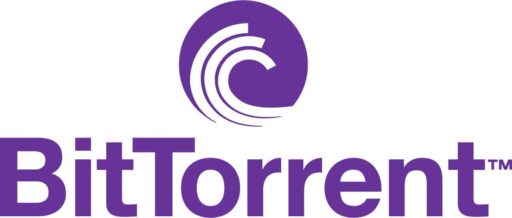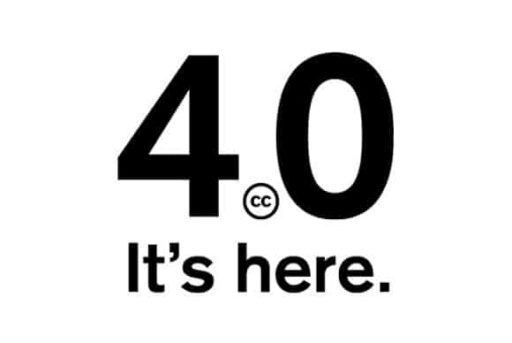Mobile users are accustomed to upper limits on downloads, but similar limits may soon be faced by cable and DSL service subscribers. Today’s broadband users have a large array of tempting high bandwidth candy on offer: 3GB to 5GB HD purchased HD movie downloads, streaming video from Netflix and Amazon, BitTorrent (whether shifting legal or pirated content), and games that push content on demand to users, sometimes in the multiple gigabyte range.
All of these applications and services may soon be forcing service providers to place more caps on broadband usage. Here is a discussion on the issue of download caps from Macworld.com’s Glenn Fleishman:
Caps come in two varieties: tiny ones advertised as low-cost options for people who don’t transfer much data (but with overage charges for atypical use), and huge ones targeted at the most profligate users. So far, the large caps aren’t generally paired with overage fees, nor are they strictly enforced–giving some credence to the idea that they’re primarily used as a tool to make users think carefully before transferring massive amounts of data.
Low caps
The argument made by cable and DSL providers is that costs are proportionate to the amount of bandwidth they serve, and so incorporating a fixed limit beyond which fees must be paid serves the purpose of allowing customers to pay for what they use while limiting network congestion.
And that’s the message the providers put out during their low-cap tests, in which a cable or DSL line is limited to 5GB to 40 GB of combined upstream and downstream bandwidth in a given month. Time Warner Cable and AT&T have both engaged in such tests in limited markets; Verizon’s wired broadband division has publicly stated that it would also consider use-based charges desirable. (Verizon Wireless, like the other three major mobile broadband operators, already imposes broadband caps and overage fees.)
But Karl Bode, the operator of DSLReports.com, says that such low-capped services “never really offer a great value to the consumer.” The 10-year-old DSLReports site collects customer reports of broadband performance and quality, and Bode acts as a frequent prod to the industry to do the right thing by subscribers.
The low-cap experiments never include the tools used frequently in other limited-resource plans, such as cell phone service. For example, there’s no such thing as broadband “rollover megabytes,” where service unused one month is carried over to the next, like cellular voice minutes are; nor is the pricing much lower or different than current plans.
“You have a house full of busy users, you’re going to run into the caps that they impose,” Bode said. “The justification that they put out there is that ‘we have to do it or we will face financial collapse,'” Bode said, but he suggests that the facts simply don’t back up that claim.
“The price of hardware is going down, the price of bandwidth is going down,” he says. And yet carriers have proposed overage fees in the $1-to-$2-per-gigabyte range. In contrast, Amazon’s S3 service–essentially cloud-hosted on-demand Internet storage–regularly charges 10 cents per gigabyte for transfer in (it’s currently free until June 30), and from 8 to 15 cents per gigabyte (based on volume) for transfers out.
Bode is concerned that low caps with metered overage fees are not actually designed to combat network congestion, but to insulate carriers from competition. For example, if a user rents a movie from iTunes, that’s one less movie being provided by the cable or telephone provider’s own video offerings.
“The goal there is to try to make an entirely different business model to protect their TV revenues,” Bode said.
But he doesn’t think that the low caps currently being tested will stick. Time Warner Cable, Bode said, “got their butt kicked” by customers, the media, and officials after testing caps in limited markets, and it’s all in a holding pattern now.
High caps
(Image Caption: A Comcast bandwidth-usage summary, currently being tested in some markets.) This contrasts with high-cap operators such as Comcast, once the whipping boy of bandwidth capping. For years, Comcast had a secret cap, beyond which a customer could be warned and then have service canceled for a year.
But in October 2008, after enormous criticism, Comcast turned this around, clearly disclosing a 250GB per month combined usage limit beyond which the firm will examine usage and take measures.
Charlie Douglas, a spokesperson for Comcast’s high-speed Internet service, said that the number of people the firm now contacts has become a very small fraction: in many months, it’s “far less than one-tenth of one percent of all users.” Douglas declined to provide exact numbers.
Of customers that cross the 250GB rubicon–myself included, in August 2009–only the “most excessive in that user group” are called, Douglas said. And the overwhelming majority of those called by Comcast reduce bandwidth usage on their own.
The reasons for bursting through a high cap can vary. Often it’s a mom or dad who is unaware that their teenager is seriously using BitTorrent. Somewhat less common are home networks populated by infected computers, so the subscriber has no idea that there’s any network problem, Douglas said.
(As for me, I was using an online backup service while researching for the feature “Online Backup Services,” and sent 600GB in one month when priming the pump. My previous month’s usage, which I thought had been heavy, was under 40GB. Oops. I tweaked settings, and fell back below the danger mark. I agree: My usage was excessive.)
Comcast’s policy is that after two warnings, the provider cancels a customer’s service, and there’s a one-year cooling-off period. Comcast offers business service to any address, however, which has no usage cap, but requires a multiyear commitment with a 75 percent early cancellation policy and costs slightly more each month.
(Image Caption: The detailed view of a Comcast bandwidth meter.) One of my biggest complaints about Comcast’s policy was that the company didn’t provide customers a way to track their own ongoing usage. But Douglas said that the company spent a year testing a bandwidth meter with its employees–including him–that was released in Portland, Oregon, in late 2008, and Washington state and Boston earlier this year. The meter will update every three hours and an independent research firm found reporting was accurate to within 0.5 percent over and under.
This kind of capping–Douglas prefers to call it an “excessive use threshold” since there’s no metering and no automatic cutoff–seems to meet a general smell test, according to Bode.
“I do think that 250GB is perfectly generous,” Bode said of Comcast’s limits, as well as those of cable operator Charter. Charter’s service has tiered caps, with 100GB, 250GB, and unlimited levels available for different prices, with the caps increasing as a user’s subscribed download speed increases.
Will competition kill caps?
Caps don’t exist at all in some markets, where competition is fierce. Verizon’s Fios fiber-to-the-home offering goes head-to-head with services and pricing with Cablevision’s triple play of voice, data, and TV plus free outdoor Wi-Fi in the Northeast. Neither company limits usage.
Many operators will face increasing competition as Clearwire rolls out its 4G WiMax offering. While WiMax’s speed isn’t competitive to the highest cable bandwidth offerings–which are 50 to 100 Mbps, depending on the provider and market–the 3 to 6 Mbps average speed and 10 Mbps burst rates compare favorably to DSL and lower-speed cable on speed and cost.
Despite all this, the carriers crave overage revenue. Verizon’s chief technical officer said in late September, “At the end of the day, the concept of a flat-rate, infinitely expandable service is unachievable.”
What is clear is that users hate bandwidth caps, broadband providers love them, and some sort of balance has to emerge. “I think you do need a cap that will draw a wall between your regular users and your absolute super-users,” DSLReports.com’s Bode said. But low caps “create a whole new world of Internet user paranoia where you don’t even consume these products they want you to consume.”
Source: PC World.




